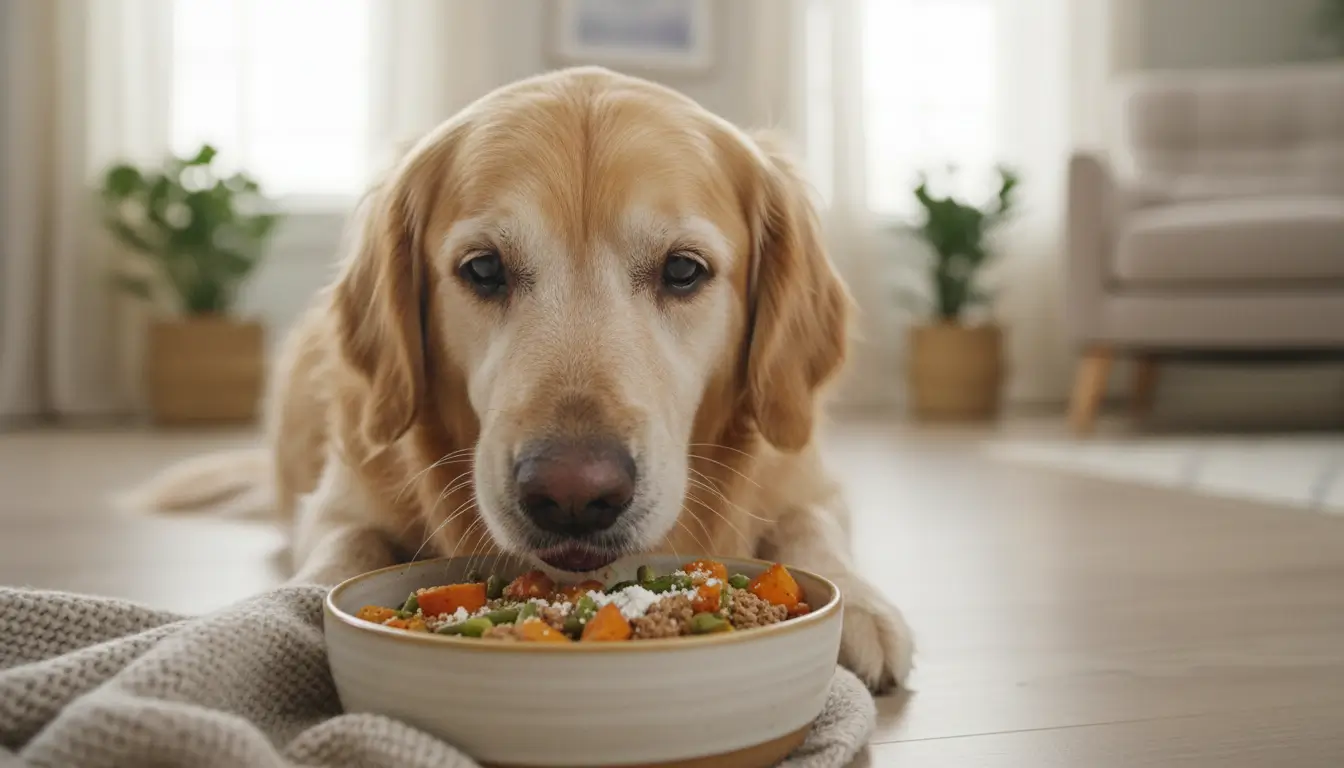Complete Guide to Senior Dog Nutrition

As dogs enter their golden years, typically around seven to ten years old depending on breed size, their nutritional needs evolve significantly. Senior dog nutrition becomes crucial for maintaining vitality, managing health issues, and enhancing quality of life. In this comprehensive guide, you’ll discover how age affects dietary requirements, essential nutrients for older dogs, signs of nutritional deficiencies, tips for transitioning to a senior diet, and foods that bolster joint health.
Whether you’re navigating an older dog diet for the first time or seeking to optimise your pet’s meals, this article provides actionable insights backed by veterinary principles. By the end, you’ll feel empowered to support your senior companion’s well-being through informed feeding choices.
How Age Impacts Canine Dietary Needs
As dogs age, their metabolism slows, leading to reduced calorie requirements and changes in how their bodies process nutrients. Smaller breeds may enter seniority around 11 years, while larger ones do so by seven. This shift necessitates adjustments in the nutrition for senior dogs to prevent obesity and support organ function.
Age-related issues like diminished kidney efficiency, weaker immune responses, and dental problems influence dietary needs. For instance, older dogs often require more digestible proteins to maintain muscle mass without overburdening the kidneys. Caloric intake might decrease by 10-20% compared to adulthood, yet nutrient density must increase to combat age-associated declines [1].
Hormonal changes and reduced activity levels further alter needs; seniors burn fewer calories and may struggle with fat absorption. Tailoring an older dog diet to these factors helps mitigate risks like diabetes or arthritis, promoting longevity.
💡 Key Insight
Consult a vet before major diet changes, as individual health conditions like hypothyroidism can uniquely impact caloric and nutrient demands.
Key Nutrients for Senior Dogs
Senior dog nutrition emphasises balanced intake of proteins, fats, carbohydrates, vitamins, and minerals tailored to aging physiology. High-quality, easily digestible proteins are vital for preserving lean muscle, ideally comprising 25-30% of the diet from sources like fish or eggs. These help counteract sarcopenia, the age-related muscle loss common in seniors [2].
Fats should be moderate to avoid weight gain, with omega-3 fatty acids from sources like flaxseed supporting skin health and reducing inflammation. Antioxidants such as vitamins E and C, along with beta-carotene, bolster the immune system and cognitive function. Fibre aids digestion, preventing constipation that’s prevalent in older dogs due to slower gut motility.
Minerals like phosphorus need careful management to protect kidney health, while glucosamine and chondroitin precursors support joints. A well-formulated nutrition for senior dogs plan ensures these elements are in bioavailable forms, enhancing absorption efficiency.
- Protein: For muscle maintenance
- Omega-3s: For anti-inflammatory benefits
- Antioxidants: To combat oxidative stress
- Fibre: For digestive regularity
“Studies show that senior dogs on antioxidant-rich diets exhibit up to 20% better cognitive performance.” [3]
Signs Indicating Poor Nutrition in Older Dogs
Recognising symptoms of inadequate senior dog nutrition is essential for timely intervention. Weight loss or gain can signal caloric imbalances; unexplained lethargy or dull coat often points to protein or fatty acid deficiencies. Older dogs may show increased thirst and urination if kidney strain from imbalanced minerals goes unchecked.
Digestive issues like chronic diarrhoea or constipation arise from insufficient fibre or poor digestibility. Joint stiffness exacerbated by lack of supportive nutrients, or frequent infections due to weakened immunity, are red flags. Monitor for skin problems, such as flakiness or hot spots, which indicate omega-3 shortages.
Cognitive decline, like disorientation or reduced responsiveness, may stem from antioxidant deficiencies. If your senior exhibits these, reassess the older dog diet. Early detection through regular vet check-ups can prevent escalation.
Common signs include:
- Unexplained weight changes
- Lethargy and weakness
- Dull fur and skin issues
Advanced indicators:
- Excessive thirst
- Digestive upset
- Joint pain worsening
Transitioning to Senior Dog Food
Switching to a senior formula requires a gradual approach to avoid gastrointestinal upset. Begin by mixing 25% new food with 75% current diet over 7-10 days, increasing the proportion incrementally. This nutrition for senior dogs transition minimises stress on the digestive system, especially important for those with sensitive stomachs.
Monitor your dog’s response closely; adjust pace if diarrhoea or refusal occurs. Consult a veterinarian to select the best food for elderly dogs, considering specific health needs like allergies. Hydration is key—ensure fresh water availability to support the dietary shift.
Portion control prevents overfeeding; weigh food accurately and adjust based on activity. This methodical process ensures your older companion adapts smoothly to an optimised older dog diet.
Foods That Support Joint Health in Elderly Dogs
Joint health is paramount in senior dog nutrition, with foods rich in glucosamine, chondroitin, and omega-3s proving beneficial. Include fatty fish like salmon for natural anti-inflammatories that reduce arthritis pain. Green-lipped mussels provide joint-supporting compounds, enhancing mobility without supplements [4].
Antioxidant-packed berries and vegetables, such as blueberries and spinach, combat oxidative damage to cartilage. Turmeric, with its curcumin, offers natural relief for inflammation—add sparingly to meals. High-quality proteins from chicken or turkey support tissue repair.
Avoid excessive grains if your dog has sensitivities; opt for whole-food sources in the best food for elderly dogs. These choices, integrated into a balanced diet, promote comfort and activity in seniors.
- Salmon: Omega-3 source
- Blueberries: Antioxidants
- Turmeric: Anti-inflammatory
- Mussels: Glucosamine boost
Key Takeaways
- Prioritise nutrient-dense, digestible foods.
- Gradual transitions ensure tolerance.
- Joint-supportive ingredients enhance mobility.
In summary, mastering senior dog nutrition involves understanding age-related changes, selecting key nutrients, spotting deficiencies, transitioning carefully, and incorporating joint-friendly foods. These steps can significantly improve your older dog’s health and happiness. Consult your veterinarian for personalised advice and start implementing these tips today to give your senior the vitality they deserve.





